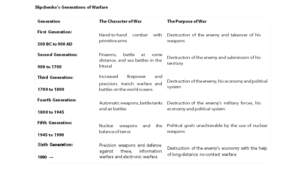Reserve Bank of India had published a booklet to make everyone aware of the modus operandi followed by fraudsters for cyber economic crimes. The booklet also lists out do’s and don’ts. Relevant excerpts are summarised below.
- JUICE JACKING – STEALING OF DATA THROUGH CHARGING CABLE
Do
+ Install anti-virus software on your mobile phone to protect it from unauthorized access.
+ Report the incident to the nearest Cyber Crime Police Station and National Cyber Crime
+ Reporting Portal at https://cybercrime.gov.in
Don’t
– Don’t use charging adapters/cables from strangers.
- LOTTERY FRAUD
Do
+ Verify the message received from unknown numbers before trusting them as members of any company or management team.
+ Always verify such offers from official websites.
+ Report the incident to the nearest Cyber Crime Police Station and National Cyber Crime Reporting Portal at https://cybercrime.gov.in
Don’t
– Do not make payments without verification, expecting very high returns.
- ONLINE JOB FRAUD
Do
+ Verify ‘the authenticity of ‘the company or recruitment agencies before paying any money. Recruitment agencies generally do not charge candidates for hiring them.
+ Report the incident to the nearest Cyber Crime Police Station and National Cyber Crime Reporting Portal at https://cybercrime.gov.in
Don’t
– Don’t pay anyone under the pretext of a job. A legitimate company will never ask for payment from a potential candidate for a job offer.
- FAKE ACCOUNT NUMBER
Do
+ Cross-check an organization’s credentials on a known database to see if they are genuine.
+Always approach registered offices for availing products.
+Funds are transferred solely based on account number.
+Fraudsters may give a genuine company name but give their account number, always verify the account number with the company before making a payment.
+Report the incident to the nearest Cyber Crime Police Station and National Cyber Crime Reporting Portal at https:// cybercrime.gov.in
Don’t
– Do not pay anybody without verifying the authenticity of the company.
- FRAUD THROUGH EMAIL
Do
+Verify with the person concerned before making any payment based on the email received.
+Verify the email ID.
+ Report the incident to the nearest Cyber Crime Police Station and National Cyber Crime Reporting Portal at https:// cybercrime.gov.in
Don’t
– Don’t make payments on receiving requests from random emails or similar-looking email ids.
- MESSAGE APP BANKING FRAUD
Do
+ Be cautious while responding to calls from unknown numbers seeking your account details.
+ Report to your home branch immediately on realizing the fraud. Block your account to prevent further financial loss.
+ Report the incident to the nearest Cyber Crime Police Station and Cyber Crime Reporting Portal at https://cybercrime.gov.in.
Don’t
– Don’t trust unknown callers offering easy banking services and sending texts through Messaging Apps.
– Don’t share card details and OTP.
- FRAUDULENT LOANS WITH STOLEN DOCUMENTS
Do
+ Always monitor the end-use of the documents in the transactions.
+ Report the incident to the nearest Cyber Crime Police Station and National Cyber Crime Reporting Portal at https://cybercrime.gov.in
Don’t
– Never share your confidential details like your Aadhaar number, PAN number, or cheques with unknown persons.
- BETTING SCAM
Do
+ In case scammed by a fake app/website, one should immediately call his/her bank to block the card/account/UPI service to prevent further transactions.
+ Report the incident to the nearest Cyber Crime Police Station and National Cyber Crime Reporting Portal at https://cybercrime.gov.in
Don’t
– One should not make payments on unknown websites.
19. FAKE VACCINATION CALL
Do
+ Read the entire SMS to read the purpose of OTP.
+ Report the incident to the nearest Cyber Crime Police Station and National Cyber Crime Reporting Portal at https:/ /cybercrime.gov.in.
Don’t
– Don’t share your Aadhaar, PAN card details, and OTP with strangers.
– PAN card-based OTP is used for various financial services including cash withdrawal from bank accounts. Therefore, it is extremely important to protect your confidential details like Aadhar and PAN cards from fraudsters.
- COVID TESTING- FAKE ONLINE SITE
Do
+ Always book any kind of test through registered pathology laboratories only.
+ Report the incident to the nearest Cyber Crime Police Station and National Cyber Crime Reporting Portal at https:/ /cybercrime.gov.in.
Don’t
– Do not make a payment in advance when you are doubtful. If anybody asks for an advance payment, it is a matter of caution and one should go ahead with those transactions with requisite precaution.
Bottom Line
It is better to be aware and always play safe.
Suggestions and value additions are most welcome
For regular updates, please register here
References and credits
Reserve Bank of India.
Disclaimer:
Information and data included in the blog are for educational & non-commercial purposes only and have been carefully adapted, excerpted, or edited from sources deemed reliable and accurate. All copyrighted material belongs to respective owners and is provided only for purposes of wider dissemination.

